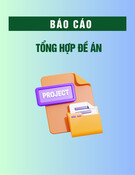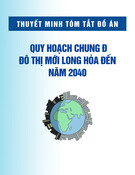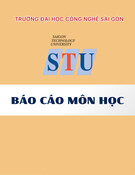
Original
article
Vulnerability
of
young
oak
seedlings
(Quercus
robur L)
to embolism:
responses
to
drought
and
to
an
inoculation
with
Ophiostoma
querci
(Georgevitch)
Nannf
G
Simonin
H Cochard
C
Delatour
A
Granier
E
Dreyer
1
INRA
Nancy,
Laboratoire
de
Pathologie
Forestière,
54280
Champenoux;
2
Équipe
Bioclimatologie
et
Écophysiologie,
Unité
Écophysiologie
Forestière,
INRA
Nancy,
54280
Champenoux,
France
(Received
7
June
1993;
accepted
27
October
1993)
Summary—
Possible
interactions
between
an
infection
with
Ophiostoma
querci
and
water
stress
on
pedunculate
oak
(Quercus
robur)
were
tested
with
potted
saplings.
O
querci was
inoculated
into
the
stems
of
3-year-old
saplings,
and
a
severe
drought
was
imposed
for
about
40
d.
Drought
promoted
an
irre-
versible
decline
in
total
leaf
specific
conductance
of
all
saplings;
direct
measurement
of
losses
of
hydraulic
conductivity
in
twigs
and
petioles
revealed
that
a
strong
embolization
occurred
in
the
vessels
as
soon
as
minimal
leaf
water
potential
decreased
below
-2.5
MPa.
This
vulnerability
to
cavitation
on
rooted
seedlings
was
in
agreement
with
earlier
data obtained
on
cut
branches
from
the
same
species
left
to
freely
dehydrate;
a
slight
artifact
was
probably
due
to
the
onset
of
occlusions
of
embolised
vessels
in
the
rooted
plants.
The
presence
of
fungal
spores
in
the
stems
did
not
induce
any
modifica-
tion
in
these
water
relations
on
well-watered
or
stressed
seedlings.
The
role
of
O
querci
in
the
oak
decline
symptoms
as
occurring
in
Europe
may
therefore
be
questioned.
water
stress
I
embolism
/
oak
I
Ophiostoma
querci
/ hydraulic
conductivity
/
water
relation-
ships
/ oak decline
Résumé —
Vulnérabilité
de
jeunes
semis
de
chêne
pédonculé
(Quercus
robur)
à
l’embolie :
réponses
à
la
sécheresse
et
à
une
inoculation
avec
Ophiostoma
querci.
Les
effets
potentiels
d’une
infection
par
Ophiostoma
querci
sur
la
réponse
à
la
sécheresse
de
jeunes
plants
de
chêne
pédonculé
ont
été
testés.
O
querci
a
été
injecté
dans
le
tronc
de
plants
âgés
de
3
ans,
et
une
séche-
resse
intense
a
été
imposée
pendant
une
quarantaine
de jours.
La
sécheresse
a
provoqué
une
dimi-
nution
irréversible
de
la
conductance
hydraulique
spécifique
de
tous
les
plants.
Des
mesures
directes
de
perte
de
conductivité
hydraulique
dans
les
rameaux
et
les
pétioles
ont
montré
qu’une
forte
embo-
lie
se
produisait
dès
que
le
potentiel
hydrique
foliaire
était
abaissé
en
dessous
de
-2.5
M
Pa.
Ce
degré
*
Correspondence
and
reprints
Symbols
and
abbreviations:ψ
wd
:
predawn
leaf
water
potential
(MPa);
ψ
wm
:
midday
leaf
water
potential
(MPa);
gL:
leaf
specific
hydraulic
conductance
(mmol
m
-2
s
-1
MPa
-1);
Et:
total
transpiration
(mmol
s
-1).

de
vulnérabilité
à
l’embolie
était
très
voisin
de
celui
détecté
en
laissant
des
branches
d’arbres
adultes
se
dessécher
rapidement
au
laboratoire.
Les
légères
différences
observées
pour
les
potentiels
hydriques
les
plus
faibles
ont
pu
être
dues
à
des
occlusions
de
vaisseaux
se
produisant
lors
de
séche-
resses
de
longue
durée.
La
présence
de
spores
dO
querci
dans
le
xylème
n’a
modifié
ni
la
conductance
totale
des
plants,
ni
la
vulnérabilité
des
rameaux
et
des
pétioles
à
la
cavitation.
Le
rôle
souvent
attribué
à
ce
champignon
dans
l’induction
des
dépérissements
de
chênes
en
Europe
doit
être
remis
en
question.
sécheresse
/
embolie
/
chênes
/ Ophiostoma
querci
/
conductivité
hydraulique
/
dépérissement
INTRODUCTION
Oak
stands
in
Western
and
Central
Europe
are
frequently
reported
to
present
severe
dieback
symptoms.
In
France,
pedunculate
oak
(Quercus
robur
L)
is
often
declining,
while
sessile
oak
(Q
petraea
(Matt)
Liebl)
seems
to
exhibit
a
better
resistance;
in
Cen-
tral
Europe,
both
species
suffer
from
severe
decline.
The
precise
chain
of
events
leading
to
the
onset
of
these
decline
processes
is
still
poorly
understood.
Environmental
con-
straints,
and
among
them
repeated
periods
of
water
shortage,
probably
play
a major
role
(Landmann
et al,
1993).
However
an
involvement
of
various
pathogens
has
fre-
quently
been
suspected
(Delatour,
1983;
Kowalski,
1991).
Among
the
numerous
fungi
isolated
from
declining
oak
trees,
those
belonging
to
the
group
of
the
Ophiostom-
atales
(Ascomycotina)
deserve
special
attention
(Delatour,
1986).
Indeed,
this
fun-
gal
group
comprises
a
number
of
strong
pathogens
like
those
inducing
oak
wilt
in
north-east
America
(Ceratocystis
fagacearum
(Bretz)
Hunt;
Gibbs,
1981),
or
the
Dutch-elm
disease
(O
novo-ulmi;
Brasier,
Sinclair
and
Campana,
1978).
These
vascular
pathogens
severely
disor-
ganize
the
water
transport
in
infected
trees
(Hall
and
MacHardy,
1981;
Beckmann,
1987).
Ophiostoma
querci
(Georgevitch)
Nannf
has
been
frequently
isolated
from
declining
oak
trees
(Kowalski,
1991)
and
is
therefore
suspected
to
be
involved
in
the
induction
of
the
dieback.
To
test
for
this
hypothesis,
Delatour
et
al
(1993)
inoculated
young
saplings
of
Q
robur with
a
suspension
of
conidia,
but
were
unable
to
detect
any
foliar
symptoms
after
this
inoculation.
They
never-
theless
observed
the
occurrence
of
local-
ized
bark
necroses
and
conspicuous
nar-
row
strips
of
browning
induced
in
the
xylem
tissue
which
were
sometimes
several
10s
of
cm
long.
Moreover,
the
fungus
could
be
reisolated
from
these
zones
even
1
year
later.
Similar
results
have
been
described
by
Balder
(1993)
with
O
querci,
O
steno-
ceras (Robak)
Melin
and
Nannf,
and
O pro-
liferum
(Kowalski
and
Butin)
de
Rulamort.
The
length
of
these
discolorations
was
highly
variable
among
individual
trees.
These
results
suggested
an
important
interaction
between
xylem
structure
in
oaks
and
the
ability
of
Ophiostoma
spp
to
spread
in
the
conducting
tissues
following
an
infection,
as
has
been
reported
for
other
vascular
pathogens
(Beckmann,
1987).
However,
even
if
the
Ophiostoma
spp
already
studied
only
promoted
the
occur-
rence
of
very
limited
symptoms
of
tra-
cheomycosis
on
oaks
under
normal
water
supply,
the
presence
of
spores
or
hyphae
inside
the
xylem
could
possibly
affect
tree
water
relations
during
drought.
Among
the
mechanisms
which
could
lead
to
long-term
damage,
induction
of
embolism
in
vessels
and
the
subsequent
dysfunctions
in
water
transport
could
be
of
major
importance.
Information
concerning
vulnerability
of
oaks
to
cavitation
is
increasing.
Cochard
et
al
(1992)
showed
that
significant
embolism
appeared
as
soon
as
the
leaf
water
poten-
tial
dropped
below -2.5
MPa
on
branches
of
Q
robur left
to
dehydrate
freely
under
labo-

ratory
conditions,
and
that
almost
all
ves-
sels
were
embolised
around
-3.3
MPa.
Measurements
made
on
adult
trees
in
a
for-
est
near
Nancy
during
a
gradually
increas-
ing
drought
yielded
similar
results
(Bréda
et al,
1993),
and
confirmed
the
good
agree-
ment
observed
by
Tyree
et
al
(1992a)
between
embolism
induction
during
drought
in
situ
and
during
rapid
dehydration
of
cut
branches.
In
the
present
work,
we
intended
to
evidence
the
cavitation
induction
patterns
obtained
with
rooted
saplings
during
slowly
increasing
drought.
In
addition,
we
tested
for
potential
interactions
between
the
pres-
ence
of
spores
and
hyphae
of
O
querci
in
the
xylem
and
the
sensitivity
to
water
stress.
In
particular,
we
tested
the
hypothesis
that
the
presence
of
spores
and
hyphae
in
the
xylem
vessels
could
reduce
the
hydraulic
conductivity
of
our
trees,
or
that
they
might
produce
compounds
reducing
significantly
the
surface
tension
of
the
xylem
sap,
as
reported
by
Kuroda
(1989)
who
observed
that
volatile
terpenes
emitted
during
the
infection
of
Pinus
thunbergii
by
a
nematode
increased
the
susceptibility
to
cavitation.
We
therefore
inoculated
O
querci directly
into
the
xylem
of
young
oaks,
and
investi-
gated
the
patterns
of
dissemination
of
the
fungus
in
the
xylem,
comparing
it
with
that
simultaneously
injected
of
Indian
ink.
We
then
submitted
the
saplings
to
water
stress
by
withholding
irrigation
and
followed
the
total
hydraulic
conductance
from
soil
to
leaves,
and
the
onset
of
embolism
in
twigs
and
petioles.
MATERIAL
AND
METHODS
Plant material
Three-year-old
seedlings
of
Q
robur
L
were
grown
in
10
L
pots
in
a
peat/sand
mixture
(50:50
v/v),
fer-
tilized
with
a
slow
release
fertilizer
(Nutricote
100,
N/P/K
13:13:13,
Fertil,
Paris),
and
grown
in
a
glasshouse
at
the
Forestry
Research
Center
of
Champenoux.
They
were
watered
every
second
day.
During
1991,
bud
break
and
flushing
occurred
during
early
March.
Seedlings
were
170-250
cm
high
and
stem
diameter
ranged
from
0.5
to
1
cm
at
the
inoculation
point.
Fungus
The
strain
of
O
querci
(Georgevitch)
Nannf
was
isolated
from
cambial
necroses
on
Q
petraea
(Matt)
Liebl
during
1985,
at
Cerrilly,
near
Chatil-
lon-sur-Seine
(north-eastern
France;
Morelet,
1992),
and
stored
on
wood
pieces
at
4°C
(Dela-
tour,
1991).
The
inoculum
was
prepared
from
cul-
tures
grown
during
about
1
month
on
petri
dishes
(Difco
malt
agar
3%,
25°C),
which
produced
large
amounts
of
conidia
(Hyalodendron
and
Pesotum
stages).
Washing
each
culture
with
15
ml
steril-
ized
water
yielded
a
high
density
of
spores
(about
10
8
ml-1
)
adjusted
to
106
m
-3
.
The
diameter
of
conidia
was
investigated
using
microfiltration;
no
conidia
were
smaller
than 0.45
μm,
but
many
passed
0.8
μm
filters.
Inoculation
A
micro-perfuse
connected
to
teflon
tubing
con-
taining
the
conidia
suspension
was
used
to
inject
the
suspension
directly
into
the
xylem
of
the
annual
growth
ring.
The
absorption
was
entirely
passive,
with
no
additional
pressure.
Experiment
1
Patterns
of
dissemination
of
the
fungus
in
the
xylem
tissue
following
injection
were
analysed
on
48
trees
using
suspensions
of
conidia
mixed
with
sterile
Indian
Ink
(5%
dilution,
Steadler,
Mars-
matic
745R;
sterilisation:
20
min
at
120°C).
Prior
to
the
use
of
this
mixed
suspension,
we
tested
for
potential
effects
of
Indian
ink
and
latex
paint,
another
dye
frequently
used
in
water
relation
stud-
ies,
on
conidial
viability
(24
h
incubation
at
25°C).
The
ink/conidia
mixture
(0.1
ml)
was injected
dur-
ing
April
1991
into
48
trees
at
50
cm
below
the
upper
limit
of
the
1990
growth
flush.
Spread
of
the
fungus
inside
the
xylem
was
observed
through
reisolation
from
cut
segments
of
stems.
Stems
were
disinfected
with
alcohol,
debarked,
and

sliced
into
1
cm
segments.
Each
segment
was
placed
on
a
malt/agar
medium
containing
50
mg
L
-1
of
both
penicillin
and
streptomycin.
Different
injection
procedures
were
tested:
(1)
half
of
the
injections
(24)
were
made
under
water
to
avoid
wounding
induced
cavitation,
and
half
in
air,
and
(2)
in
each
group
18
trees
were
injected
at
dawn
and
6
at
midday
with
about
-1.5
MPa
water
potentia.
Reisolation
was
made
after
2-3
h,
and
delayed
by
24
h
on
half
of
the
trees.
Assessment
of
vessel
length
Vessel
lengths
were
measured
in
8
seedlings
using
the
technique
described
by
Zimmermann
and
Jeje
(1981 )
adapted
to
oaks
by
Cochard
and
Tyree
(1990).
A
solution
of
blue
pigment
(latex
paint)
was
diluted
100/1
in
water
and
passed
through
a
5
μm
filter.
The
eluate
was
perfused
through
stem
segments
from
the
distal
end,
at
an
over-pressure
of
0.015
MPa
during
24
h.
Per-
fusions
were
applied
at
4
different
locations:
5
cm
above,
and
5,
20,
50
cm
below
the
contact
zone
between
2
successive
growth
cycles;
2
saplings
were
used
for
each
of
these
treatments.
The
num-
ber
of
vessels
filled
with
pigments
was
counted
under
a
dissecting
microscope
every
2.5
cm.
Only
vessels
included
in
the
current
year’s
(1991)
wood
with
a
diameter
above
20
um
were
taken
into
account.
The
statistical
procedure
of
Zimmer-
mann
and
Jeje
(1981)
was
used
to
estimate
ves-
sel length
distribution.
Experiment
2
Total
hydraulic
conductance
during
drought
was
measured
on
16
seedlings
grown
in
individual
10
L
pots.
They
were
inoculated
during
May
with
repeated
injections
at
about
10
points
all
along
the
upper
70
cm
of
the
stem
to
ensure
a
satis-
factory
dispersal
of
conidia
all
over
the
xylem
(inoculated
trees),
or
injected
in
the
same
way
with
sterile
water
(control
trees).
After
2
months
of
incubation,
4
treatments
were
defined:
(1)
water-
stressed
and
inoculated
with
O
querci;
(2)
water-
stressed
and
non-inoculated;
(3)
well-watered
and
inoculated;
and
(4)
well-watered
and
non-
inoculated
(control).
Two
successive
cycles
of
drought
were
imposed,
each
lasting
about
10-15
d.
Pots
were
weighed
every
second
day
and
either
the
total
amount
(controls)
or
half
of
the
lost
water
(water
stress)
was
added
during
the
first
drought
cycle.
During
the
second,
pots
were
left
to
dry
out
freely.
Predawn
(ψ
wd
)
and
midday
(ψ
wm
)
leaf
water
potentials
were
mea-
sured
on
one
leaf
of
every
tree
during
6
sunny
days
with
a
pressure
chamber,
before
dawn,
and
between
12
and
1
pm
UT,
respectively.
Losses
of
weight
were
recorded
for
each
plant
between
11
AM
till
1:30
pm
UT
(Sartorius
IB31000P
balance,
± 0.1g).
Due
to
the
large
leaf
area
of
the
saplings,
soil
evaporation
was
considered
to
be
negligible
and
the
loss of
weight
was
recorded
as
the
diurnal
maximal
rate
of
transpiration
(E
t
).
Total
leaf
area
(LA)
of
each
tree
was
estimated
at
the
end
of
the
experiment
with
a
planimeter
(ΔT
Devices,
UK).
These
measurements
allowed
the
computation
of
a
specific
soil
to
leaf
hydraulic
conductance
as
reported
by
Cohen
et
al
(1983),
Granier
and
Colin
(1990)
and
Reich
and
Hinckley
(1989)
as:
gL:
specific
soil-to-leaf
hydraulic
conductance
(mmol
m
-2
s
-1
MPa
-1);
Et:
maximal
transpiration
(mmol
s
-1);
LA:
leaf
area
(m
2
);
and
ψ
wd
and
ψ
wm
:
predawn
and
minimal
leaf
water
potential
(MPa);
in
this
equation
ψ
wd
was
used
as
an
estimate
of
the
soil
water
potential.
Experiment 3
Loss
of
hydraulic
conductivity
of
twigs
and
petioles
during
drought
was
examined
on
80
seedlings
(same
substrate,
same
pots,
same
height,
but
2-3
seedlings
grown
in
each
pot)
were
used
for
the
same
treatments
as
in
Experiment 2.
Drought
was
imposed
as
in
Experiment 2,
and
ψ
wd
mea-
sured
every
second
day
on
one
of
the
individuals
in
each
pot.
Watering
was
controlled
to
maintain
midday
leaf
water
potential
(ψ
wm
)
above
-3.3
MPa
during
the
first
cycle,
and
no
watering
was
supplied during
the
second
period
of
drought.
The
technique
developed
by
Sperry
et al (1988),
and
described
in
detail
by
Cochard
et al (1992)
for
oak
trees
was
used
to
monitor
loss
of
hydraulic
conductivity.
ψ
wn
was
measured
between
11
am
and
1
pm
UT
and
the
pot
rewatered
to
stop
any
further
induction
of
embolism.
During
the
follow-
ing
morning,
5
twigs
and
10
petioles
were
cut
off
under
water
from
the
upper
crown
of
the
same
seedling.
Twigs
were
recut
into
2
cm
long
seg-
ments
under
water.
Petioles
were
prepared
in
the
same
way,
and
a
segment
of
the
leaf
mid-rib
included
whenever
the
petiole
was
less
than
2
cm

long.
This
procedure
was
repeated
during
the
experiment
on
8
well-watered
and
15
water-
stressed
for
both
the
inoculated
and
control
treat-
ments.
Embolism
was
computed
as
the
loss
of
conductivity,
ie
as:
where k = F// P
where
ki,
is
the
actual
conductivity
(mg
s
-1
MPa
-1),
measured
immediately
on
the
sample
with
a
65
cm
head
of
degassed
distilled
water
containing
0.1%
HCl
(pH
2);
this
step
was
performed
as
quickly
as
possible
to
avoid
passive
resaturation
of
the
xylem;
km
is
the
maximal
conductivity,
mea-
sured
after
resaturation
of
the
samples
by
repeated
flushes
of
a
perfusion
solution
at
0.1
MPa;
a
single
flushing
of
15-20
min
was
usually
enough
to
fully
restore
maximal
conductivity;
for
strongly
embolized
samples,
2
periods
of
15
min
each
were
used;
F is
the
actual
flow
of
degassed
water
through
the
sample
(kg
s
-1
), monitored
with
a
balance
(Mettler,
±
0.01
mg);
I
is
the
length
of
the
sample
(m),
usually
2
cm;
and
P
is
the
pressure
applied
to
the
water
(MPa).
Maximal
conductivity
(k
m)
was
used
to
calculate
the
leaf
specific
conductivity
of
individual
petioles
(=
km
/LA,
mg
s
-1
MPa
-1
m
-1
,
with
LA:
leaf
area).
RESULTS
Vessel
lengths
Distributions
of
vessel
lengths
showed
fol-
lowing
features
(fig
1):
(1)
vessel
lengths
measured
from
the
top
of
these
2.5
m
high
saplings
sometimes
reached
values
as
high
as
80
or
even
110
cm;
(2)
mean
vessel
length
increased
from
top
to
bottom
of
the
stem;
(3)
no
discontinuity
appeared
between
both
growth
flushes
(1990
and
1991);
and
(4)
more
than
half
of
the
vessels
5
cm
above
the
connection
were
over
5
cm
long.
Fungus
dispersal
in
the
stem
O
querci could
be
reisolated
in
continuous
sequences from
37
trees
and
in
discontin-
uous
sequences
in
the
11
remaining
from
the
injection
point
till
a
maximal
distance
varying
between
7
and
46
cm
(mean
28.7 ±
10.7
cm,
very
regular
distribution
with
a
kur-
tosis of
-1.114
and
a
skewness
of
-0.022).
The
maximal
spread
was
identical
whether
the
injection
had
been
made
under
water
or
not
(respectively
29.9
±
10.9
and
27.4
±
10.6
cm,
Fisher
PLSD
non-signifi-
cant
at
5%).
No
significant
effect
of
any
of
the
other
injection
procedures
could
be
observed:
injections
at
predawn,
while
water
potential
was
high,
were
followed
by
the
same
pattern
of
distribution
of
the conidia
in
the
stems
than
injections
made
at
mid-
day;
furthermore,
reisolation
after
2
h
yielded
the
same
maximal
distance
of
spread
than
those
made
after
a
24
h
delay.
The
only
dif-
ference
was
related
to
the
speed
of
absorp-
















